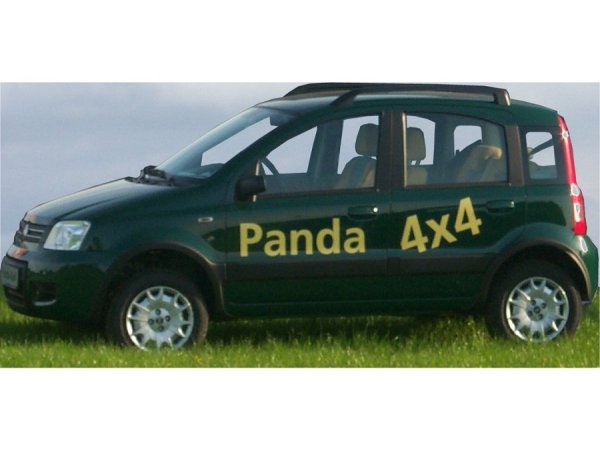The Fabbrica Italiana Automobili Torino was established in 1899. Cleverly, to give an additional religious significance by stringing together the first letters in Catholic Italy. Fiat is the third person singular of the Latin verb 'fieri', which translates as 'will'. In the Old Testament it is called in the Latin translation of Genesis (1 Genesis 1, 3) 'fiat lux' what means 'Let there be light'.
Almost from the very beginning Agnelli, a former cavalry-officer and racer, inhibited a key position. For the first half of the 20th century, Agnelli and Fiat were as much intertwined as Fiat and Turino. Agnelli was more typically thinking in terms of industrial production than in terms of innovation. But maybe this was the competitive edge that led only Fiat to survive unlike numerous other italian competitors. The first vehicle was designed for four persons, facing each other while seated. The driver had to look over the persons sitting in front. They were less prone to become wet, because a foldable roof protected them somewhat. The small car had marvelous wooden rims with air-wheels. Its rear engine was comparably small with 600 cm≥, distributed on two cylinders. The engine performed 2,5 kW (3,5 HP) with water cooling. From the three-gear transmission, the power was transferred by chain to the rear.
It is not correct to say that Fiat only built small series cars. Sportive cars were built, too. In 1904 there is a vehicle with 12/18 KW (16/24 bhp) that looks quite sportive already, in 1906 the top speed mark of 200 km/h is reached, and in 1907 a victory with a racing car with 96 KW (130 bhp) could be celebrated at the French Grand Prix. In the 'New world' the Grand Prix was won e.g. in 1911. Fiat built engines with up to 22 litres displacement. For 20 years Fiat participated successfully in racing. 1954 there are try-outs with gas turbine vehicles.
Earlier than other European manufacturers Fiat introduced in 1919 modern manufacturing methods. It was not a problem for them to copy other cars (for example Fiat 501 - CitroŽn A). Yet, Fiat did provide innovations to the world of cars. For example with the Topolino ('small mouse') of 1936, outstanding for its compact building methods, independent suspension in front, and less than 5 l/100 km fuel consumption. The engine had only 570 cm≥ and its 10 KW (13 bhp) were sufficient to carry two persons and their luggage. Its third and fourth (!) gear were already synchronized. Perhaps this car established Fiat's reputation as a very skillful small car manufacturer. On the other hand, Fiat was very much able to build for example for the American market the 'Super-Fiat'. Already in 1912 it had 12 cylinders in a V-shape, hanging valves and a four wheel brake, supported by vacuum. However, the marketing of big cars was not Fiat's strongest point.
 After the death of Agnelli, Vittorio Valletta led the factory successfully. He was succeeded by Agnelli's grandchild, named after him, Giovanni Agnelli. He gave up his somewhat easier life style for this. The company remained very successful way into the 80's, having finally the largest production capacity in Europe in terms of numbers. Fiat comprised more than 30 factories around the world with more than 150.000 employees. Success creates responsibility, not always to the benefit of a company. Nearly all Italian car parts producers were mercifully taken over by Fiat, which did not contribute to their economic success. In 2005 General Motors bought itself out of a partnership with Fiat. After the death of Agnelli, Vittorio Valletta led the factory successfully. He was succeeded by Agnelli's grandchild, named after him, Giovanni Agnelli. He gave up his somewhat easier life style for this. The company remained very successful way into the 80's, having finally the largest production capacity in Europe in terms of numbers. Fiat comprised more than 30 factories around the world with more than 150.000 employees. Success creates responsibility, not always to the benefit of a company. Nearly all Italian car parts producers were mercifully taken over by Fiat, which did not contribute to their economic success. In 2005 General Motors bought itself out of a partnership with Fiat.
|



